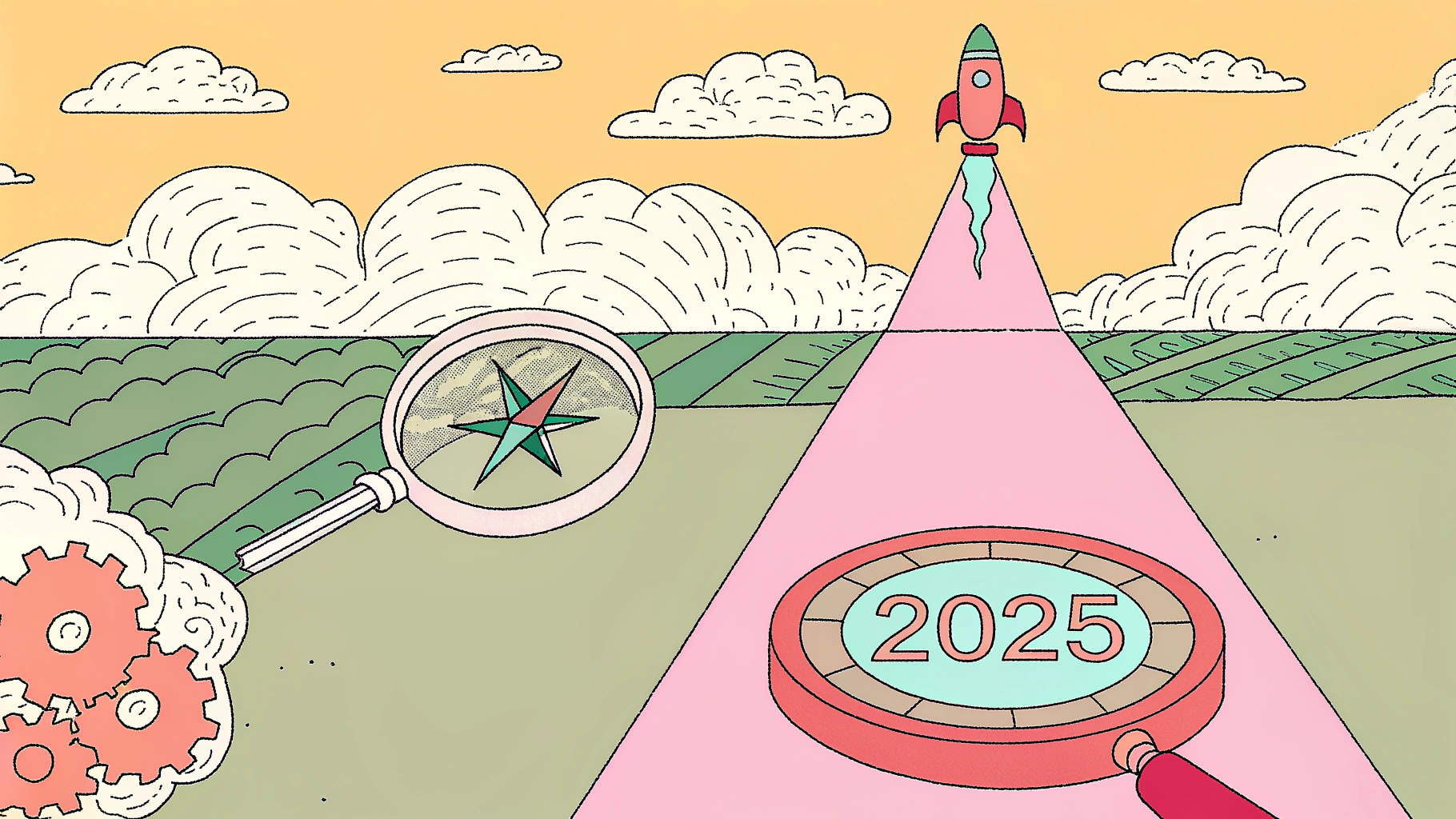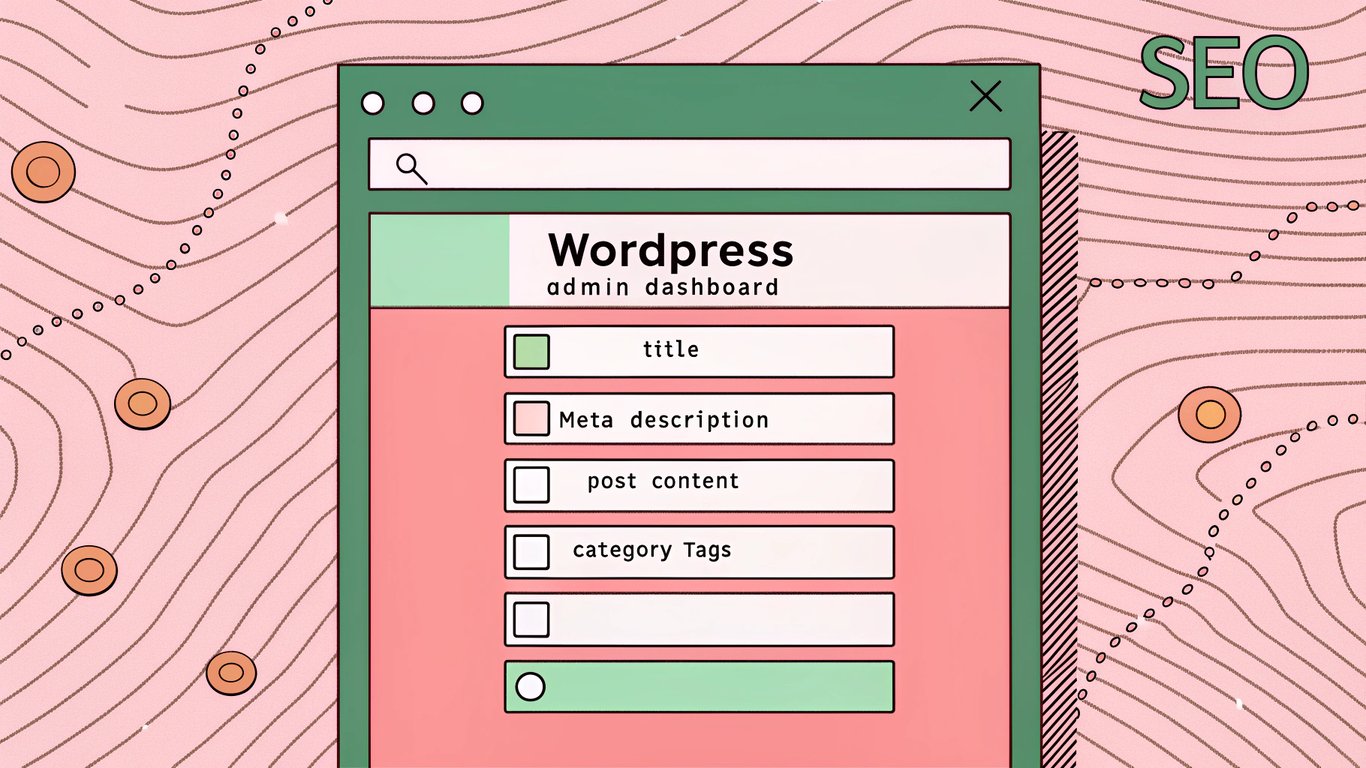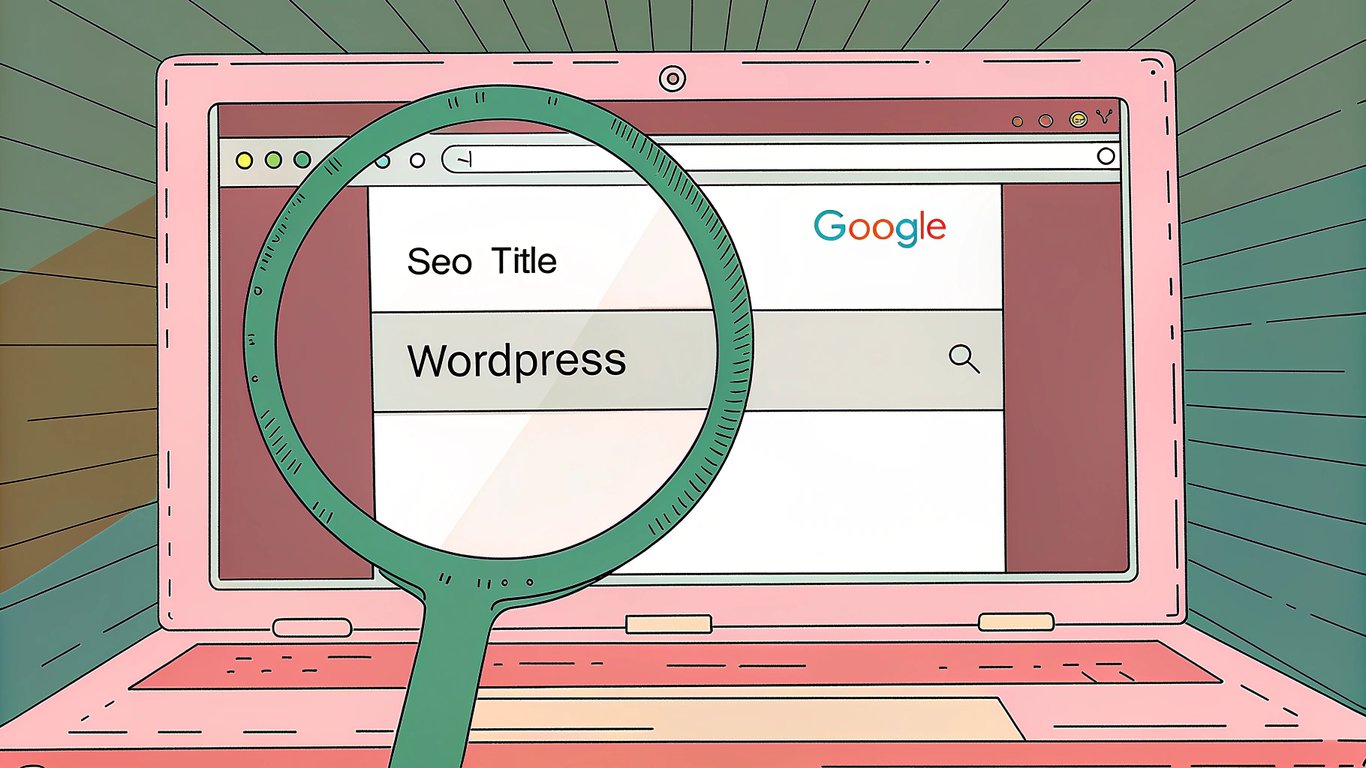Why Your SEO Success Depends on a Strategic Content Roadmap
If you’ve ever felt like your content plan is just a jumble of blog post ideas, you’re not alone. Most teams start with a basic calendar, but that’s not enough anymore. A content roadmap for SEO is a living, strategic document that connects every piece of content to your bigger SEO strategy planning and business goals. It’s not just about what you’ll publish next week. It’s about why you’re publishing it, how it fits into your content strategy timeline, and what results you expect.
Here’s the thing: the digital world moves fast. Google’s always tweaking its algorithm, and now AI is shaking up how people search and what shows up in results. If you’re just winging it with a list of topics, you’ll probably fall behind. A real roadmap helps you stay focused, adapt to changes, and actually measure what’s working.
Let’s be honest, most content teams run into the same headaches:
- Content chaos (too many ideas, not enough direction)
- Unclear priorities (what should we work on first?)
- Trouble measuring what’s actually moving the needle
- Struggling to keep up with constant SEO changes
Sound familiar? You’re not alone. Even experienced marketers get stuck here. That’s why a strategic roadmap matters so much more than a simple content calendar. A calendar just tells you when to hit publish. A roadmap shows you how every article, guide, or landing page ladders up to your SEO and business goals. It’s the difference between checking boxes and actually building momentum.
So, what exactly is a roadmap in SEO? Think of it as a blueprint that lays out how your team will tackle the most important SEO opportunities. It breaks down big goals into specific tactics, tasks, and timelines. You can see at a glance what’s coming up, who’s responsible, and how each step fits into the bigger picture. It’s not just a to-do list. It’s a plan for balancing quick wins with long-term growth.
This article lays out a 5-step framework for building a content roadmap that actually drives SEO results. These steps aren’t just theory—they’re based on what successful content teams and SEO pros use every day. You’ll get practical advice, not just high-level ideas.
Ready to bring order to the chaos and set your content up for real, measurable growth? Let’s jump into the first step: auditing your current content landscape and setting clear goals.
Step 1: Audit Your Content Landscape and Set Strategic Goals
Every strong content roadmap for SEO starts with a reality check. If you don't know what you have, what's working, or where you're missing out, it's almost impossible to build a plan that actually moves the needle. This first step is all about getting honest with your current content, spotting the gaps, and setting goals that actually mean something for your business.
Conducting a Comprehensive Content Audit
A real content audit isn't just a spreadsheet of URLs. It's a deep dive into what you've published, how it's performing, and whether it still deserves a spot on your site. Start by listing every piece of content you own—blog posts, landing pages, guides, even those old case studies you forgot about. For each one, pull in performance metrics like organic traffic, keyword rankings, conversions, and engagement. Google Analytics and Google Search Console are your best friends here.
But numbers only tell part of the story. You also need to look at content quality and relevance. Is the information up to date? Does it match what your audience is searching for now? Are there broken links or outdated stats? This is where AI tools can save you hours. For example, Republish AI's Nova AI Agent can analyze your existing content and flag what needs a refresh or a rewrite. That way, you don't waste time updating pages that aren't worth it.
- Inventory all existing content (URLs, titles, types)
- Pull performance data (traffic, rankings, conversions, engagement)
- Evaluate content quality and accuracy
- Check for outdated information or broken links
- Tag content for keep, update, merge, or remove
This SEO audit process gives you a clear picture of your strengths and weaknesses. It's the foundation for every smart move you'll make next.

Identifying Content Gaps and Opportunities
Once you know what you have, it's time to figure out what you're missing. Content gap analysis is about finding the topics, questions, and pain points your audience cares about—but you haven't covered yet. Start with keyword research. Tools like Ahrefs, SEMrush, or even Google's own Keyword Planner can help you spot high-potential keywords you aren't ranking for.
Competitor analysis is another goldmine. Look at what your top rivals are ranking for. What topics do they cover that you don't? What formats are they using—guides, videos, FAQs? Republish AI's Atlas AI Agent can help reverse-engineer top-performing content in your niche, making it easier to spot those gaps. And don't forget about search intent mapping. Sometimes, you have content on a topic, but it doesn't match what searchers actually want.
One of the most underrated tools for this is Google Search Console. Head to the 'Performance' report and check the 'Queries' tab. You'll see keywords your site is already showing up for—even if you're not ranking high. Look for queries with lots of impressions but low clicks. These are often untapped opportunities. Maybe your content isn't answering the question well enough, or maybe you need a new page entirely.
- Use keyword research tools to find new topics
- Analyze competitors' top-ranking pages
- Map your content to different stages of the customer journey
- Check Google Search Console for low-hanging keyword fruit
- Ask your sales or support teams about common customer questions
This kind of content gap analysis isn't just about chasing keywords. It's about making sure your site is the go-to resource for your audience—no matter what they're searching for.
Setting SMART Goals for Your Content Roadmap
Now that you know where you stand and what you're missing, it's time to set some goals. Not just "get more traffic" or "rank higher"—those are too vague to be useful. You need SMART goals: Specific, Measurable, Attainable, Relevant, and Time-bound. This is where SEO goal setting gets real.
Basic Goal | SMART SEO Goal |
|---|---|
Increase blog traffic | Grow organic blog sessions by 30% in 6 months by publishing 2 new posts per week targeting high-intent keywords |
Rank higher for main keyword | Achieve top 3 ranking for 'content roadmap SEO' within 4 months by optimizing existing pillar page and building 5 supporting articles |
Get more leads | Increase content-driven form submissions by 20% in Q3 by updating 10 high-traffic posts with new CTAs and lead magnets |
See the difference? SMART goals give you a target and a way to measure if you're actually hitting it. And they should always tie back to your bigger business objectives—like revenue, customer growth, or brand authority. SEO KPI tracking is what keeps your roadmap honest.
So, what is an SEO content plan, anyway? It's the process of picking topics and keywords that have real business potential, then mapping out how you'll create and optimize content to boost engagement and search rankings. It's not just a list of blog ideas—it's a strategy for making your site more valuable to both users and search engines.
Once you've nailed down your current content landscape and set clear, actionable goals, you're ready for the next step: building a content strategy that actually gets you there. That's where the real fun (and results) start.

Step 2: Develop Your Content Strategy and Prioritization Framework
Choosing the Right Content Strategy Approach
Picking a content strategy isn't just about chasing keywords. It's about matching your approach to your goals, your resources, and what your audience actually wants. There are a few tried-and-true methods that keep showing up in top-performing SEO roadmaps.
- Targeting low-difficulty keywords: This is the bread and butter for newer sites or anyone looking for quick SEO wins. These keywords have less competition, so you can rank faster. Great for building momentum and showing early results.
- Focusing on long-tail keywords: Long-tail phrases are more specific and usually have lower search volume, but they're easier to rank for and often bring in visitors who are ready to take action. If you're in a crowded niche, this approach can help you carve out your own space.
- Establishing topical authority: Instead of just writing about random topics, you go deep on a single subject. Cover every angle, answer every question, and become the go-to resource. Google loves this, and so do readers. This is a solid move for brands aiming to dominate a niche.
- Creating programmatic content: This means using templates or data to generate lots of similar pages at scale. Think city-specific landing pages or product variations. It's a power move for big sites, but you need to keep quality high or risk thin content penalties.
So, which approach should you use? It depends. If you're just starting out, low-difficulty and long-tail keywords are your best friends. If you've already got some traction, building topical authority can take you to the next level. Programmatic content works best for established sites with lots of data or products.
Now, about the 10x rule in SEO. People ask about this all the time. The idea is simple: create content that's ten times better than anything else on the first page. Not just a little better—way better. That means deeper research, better visuals, more actionable advice, and a user experience that makes people stick around. If your content is truly 10x, it's almost impossible for visitors to ignore. It's not easy, but it's what separates the best from the rest.
Creating a Value-Based Prioritization System
Once you've got a list of content ideas, you need a way to decide what to tackle first. That's where a value-based content prioritization framework comes in. It's not just about what sounds cool—it's about what will actually move the needle for your SEO and your business.
Here's how most pros do it: they score each content initiative based on a few key factors. The most common are:
- Potential SEO impact: How much organic traffic or authority could this bring?
- Level of effort: How much time, money, or resources will it take?
- Business risk: What happens if this flops? Is there a downside?
- Urgency: Is this time-sensitive? Will waiting mean missing out?
You can use a simple formula to calculate a priority score for each idea. For example:
Priority Score = (SEO Impact + Business Value + Urgency) / Level of Effort
Give each factor a score from 1 to 5 (with 5 being highest). Add up the top three, then divide by the effort score. The higher the result, the higher the priority. It's not rocket science, but it works.
Content Initiative | SEO Impact (1-5) | Business Value (1-5) | Urgency (1-5) | Effort (1-5) | Priority Score |
|---|---|---|---|---|---|
Update old blog post | 4 | 3 | 5 | 2 | 6.0 |
Create new product guide | 5 | 5 | 3 | 4 | 3.25 |
Launch city landing pages | 3 | 4 | 2 | 5 | 1.8 |
Write 10x resource article | 5 | 5 | 4 | 5 | 2.8 |
This kind of scoring system helps you cut through the noise. You can see at a glance which projects are quick wins and which ones might be resource hogs. It's also a great way to justify your choices to stakeholders who want to know why you're working on one thing instead of another.
Balancing Quick Wins and Long-Term Projects
Not every content project is created equal. Some are quick wins—high impact, low effort. Others are long-term investments that take more time but can pay off big. The trick is to balance both, so you're always making progress without burning out your team or blowing your budget.
A simple way to visualize this is with a prioritization matrix. Map value (impact) on one axis and effort on the other. Quick wins land in the high-value, low-effort quadrant. These are your low-hanging fruit. Long-term projects usually sit in the high-value, high-effort box. You need both to build a sustainable SEO strategy.
Type | Impact | Effort | Example |
|---|---|---|---|
Quick Win | High | Low | Update meta titles for top pages |
Long-Term | High | High | Build a comprehensive resource hub |
Low Priority | Low | High | Create content for rarely searched topics |
Fillers | Low | Low | Minor FAQ updates |
Think of quick wins as those easily achievable tasks that give you immediate ranking boosts. I'm talking about things like optimizing title tags and meta descriptions for high-traffic pages. Use tools like Semrush or Ahrefs to pinpoint keywords you're already ranking for (positions 6-20) and then tweak the content to climb higher. Another quick fix? Adding internal links to relevant content. If you've got a blog post about 'content marketing,' link it to your service page on 'SEO content creation.' It's like giving Google a roadmap of your site.
Now, let's talk about the big projects – the ones that require more time and resources but pay off big time in the long run. We're talking about building topical authority. This means creating a cluster of content around a core topic, demonstrating to search engines that you're an expert. For example, if you want to rank for 'SEO,' you might create pillar content and supporting articles on keyword research, link building, technical SEO, and content optimization. This establishes you as a go-to resource and boosts your overall domain authority. The goal? To become the definitive source of information in your niche. Start by identifying gaps in your existing content and planning out a series of in-depth guides and resources to fill those gaps.
AI isn't just a buzzword; it's a tool that can seriously streamline your content creation process. Instead of viewing AI as a replacement for human writers, think of it as a powerful assistant. Use it for tasks like keyword research, generating content outlines, or even drafting initial versions of blog posts. The real value lies in using AI to free up your time so you can focus on the strategic aspects of your content roadmap – things like audience research, content strategy, and ensuring your content aligns with your overall business goals. By integrating AI strategically, you can produce higher-quality content more efficiently and stay ahead of the curve.
Once you've nailed down your strategy and built a solid content prioritization framework, it's time to get organized. Next up: how to structure and schedule your content roadmap so nothing falls through the cracks.
Step 3: Organize and Schedule Your Content Roadmap
Structuring Your Roadmap for Maximum Clarity
A content roadmap is only as useful as it is clear. If your team can't see what's next or how projects connect, things get messy fast. That's why the way you structure and visualize your roadmap matters a lot. There isn't a single "best" way, but some views work better for certain teams or projects.
- List view: This is your classic spreadsheet or checklist. It's great for tracking lots of small tasks, especially if you want to filter by status, owner, or deadline. Many teams start here because it's simple and familiar.
- Kanban view: Think Trello or the board view in Asana. Tasks move from "To Do" to "In Progress" to "Done." This is perfect for visualizing workflow and spotting bottlenecks. If you like dragging cards around, you'll probably love this.
- Timeline (Gantt) view: This one shows how tasks overlap and when they're due. It's ideal for big projects with lots of dependencies. You can see at a glance if something's about to slip or if two projects are about to collide.
Breaking down large content projects is a must. If you just write "Launch SEO pillar page" on your roadmap, nobody knows what that actually means or how long it'll take. Instead, split it into smaller, actionable tasks: research keywords, outline, draft, review, optimize, publish, promote. This makes it way easier to assign work, track progress, and get buy-in from stakeholders who want to see movement.
You can also organize your roadmap by content types (like blog posts, landing pages, videos), topics (clusters around a theme), or customer journey stages (awareness, consideration, decision). For example, you might have a column for "Top of Funnel" content and another for "Bottom of Funnel". This helps with SEO workflow optimization and makes sure you're not just churning out random pieces, but actually building a strategy that covers all your bases.
The 50-30-20 Rule for Content Time Management
Even the best roadmap falls apart if you don't manage your time. That's where the 50-30-20 rule comes in. It's a simple way to make sure you're not just reacting to the latest fire drill, but actually moving the needle on your SEO goals.
Here's how it works: spend 50% of your time on non-negotiable, high-impact content tasks. These are the things that drive results and align with your main objectives. Next, use 30% for negotiable tasks—stuff that lets you experiment, collaborate, or try new formats. The last 20% goes to auditing and adjusting your roadmap. That means checking what's working, what isn't, and making changes before things go off the rails.
Category | Description | Examples |
|---|---|---|
50%: Non-negotiable, high-impact | Must-do tasks that directly support your SEO strategy | Publishing core blog posts, updating key landing pages, technical SEO fixes |
30%: Negotiable, experimental | Tasks that allow for learning, testing, or collaboration | Trying new content formats, A/B testing headlines, guest posting |
20%: Audit & adjust | Reviewing performance and updating the roadmap | Content audits, competitor analysis, updating priorities |
If you're working a 40-hour week, that's about 20 hours on your main content, 12 on experiments or side projects, and 8 on review and planning. But honestly, the exact split doesn't matter as much as the habit. The point is to avoid spending all your time on urgent but low-impact stuff.
- Block time on your calendar for each category—don't let meetings eat it all up.
- Review your roadmap every week, not just at the end of the month.
- Say no to "nice-to-have" projects if they threaten your 50%.
- Use templates for recurring tasks to save time.
- Automate what you can (like reporting or content updates) to free up your schedule.
Tools and Templates for Effective Roadmap Management
You don't need fancy software to build a content roadmap, but the right tools can make your life a lot easier. Project management platforms like Asana, Monday.com, and Trello are popular for a reason. They let you assign tasks, set deadlines, and keep everyone on the same page. You can switch between list, board, and timeline views depending on what you need that week.
If you're running your site on WordPress, it's smart to look for tools that play nicely with your existing setup. Republish AI's suite, for example, integrates with WordPress to help you create, optimize, and update content right inside your workflow. That means less time copying and pasting between platforms, and more time actually working on your SEO roadmap.
Templates are your friend, too. Whether it's a simple Google Sheet for tracking content status or a Kanban board template for your editorial calendar, having a repeatable structure saves time and reduces errors. Just make sure whatever you pick fits your team's style. If your writers hate Gantt charts, don't force it. The best tool is the one your team will actually use.
One last thing: integration matters. If your roadmap tool doesn't sync with your SEO analytics, content management system, or communication channels, you'll waste hours on manual updates. Look for platforms that support plugins or have open APIs. That way, you can automate routine SEO task management and focus on the work that really matters.
Once your roadmap is organized and your tools are humming, it's time to put your plan into action. Next up: executing your roadmap and keeping an eye on what your competitors are doing.
Step 4 & 5: Execute, Track, and Evolve Your Content Roadmap
Executing Your Content Plan with Consistency
Execution is where most content roadmaps either shine or fall apart. You can have the best strategy in the world, but if you can't deliver on time and keep quality high, your SEO results will stall. Consistency is the secret sauce. That means publishing on a regular schedule, sticking to your deadlines, and not letting quality slip just to hit a date. It's not easy, especially when priorities shift or resources get tight. But the teams that win at SEO are the ones who keep showing up, week after week.
AI tools are changing the game for content execution. With something like Republish AI's Atlas AI Agent, you can create expert-level, SEO-optimized articles faster than most teams could draft an outline. That doesn't mean you should let robots take over your brand voice, but it does mean you can scale up production without burning out your writers. Use AI to handle the heavy lifting on research, structure, and even first drafts. Then have a human editor polish things up. This combo keeps your content pipeline moving and your standards high.
Don't forget about your existing content. A lot of sites pour all their energy into new articles and ignore the goldmine sitting in their archives. That's a mistake. Search engines love fresh, relevant content. Regularly updating and improving older posts can drive big gains in rankings and traffic. Republish AI's Nova AI Agent is built for this. It analyzes your content library, flags pieces that need a refresh, and helps you update them efficiently. If you want a deeper dive on this, check out Republish AI's content refresh SEO guide.
So, what is a content roadmap, really? It's not just a list of blog ideas or a calendar with due dates. A true content roadmap breaks down your campaigns into step-by-step timelines. It shows what needs to be created, who's responsible, and when each piece should go live. This structure keeps everyone on the same page and makes big projects feel a lot less overwhelming.
- Set clear deadlines for every content task
- Assign ownership so nothing falls through the cracks
- Use AI to speed up research and drafting
- Schedule regular content refreshes (not just new posts)
- Keep your roadmap visible to the whole team
Tracking Performance and Measuring Success
You can't improve what you don't measure. Tracking your content's performance is non-negotiable if you want your roadmap to actually drive results. The best teams set up a simple but robust SEO performance tracking system. They check in on their numbers regularly, not just at the end of the quarter when it's too late to course-correct.
Here are the key metrics you should keep an eye on:
- Organic traffic (from Google Analytics or similar tools)
- Keyword rankings (track your target terms in Google Search Console)
- Conversions (sign-ups, downloads, purchases tied to content)
- Engagement (time on page, bounce rate, scroll depth)
- Content refresh schedule (how often you update existing posts)
Most teams review these numbers monthly, but if you're moving fast or running a big campaign, weekly check-ins can catch issues early. Google Analytics and Google Search Console are the go-to tools for most. They give you the basics: who's visiting, what they're reading, and how they're finding you. For more advanced insights, some teams layer in tools like Ahrefs or SEMrush, but you don't need to overcomplicate things to get started.
Republish AI's suite can help here, too. Their tools surface actionable insights about which articles are performing, which need a refresh, and where your biggest opportunities lie. That means less time digging through spreadsheets and more time actually improving your content.
Watch out for these warning signs that your content roadmap needs a tune-up:
- Traffic is flat or dropping for several months
- Your top keywords are slipping in rankings
- Lots of content is published but engagement is low
- You keep missing deadlines or pushing projects back
- No one is updating old posts (your content refresh schedule is empty)
- Team members are unclear on priorities or next steps
If you spot any of these, it's time to pause and reassess. Sometimes the fix is simple: update your roadmap, clarify ownership, or shift focus to higher-impact topics. Other times, you might need a bigger reset. Either way, don't just keep pushing forward if the data says something's off.
Evolving Your Roadmap for Long-Term SEO Success
SEO isn't static. What worked last year (or even last month) might not work tomorrow. That's why the best content roadmaps are built to evolve. Regular reviews are your safety net. Most teams do a deep dive every quarter, but monthly check-ins can help you spot trends and adjust faster. Use these reviews to look at what's working, what's stalled, and what new opportunities are popping up.
Don't ignore the outside world. Google rolls out algorithm updates all the time. Competitors launch new content. Search trends shift. If you aren't watching, you can fall behind fast. Make it a habit to scan for new SEO trends, check in on your competitors, and update your roadmap to reflect what you find. This is where SEO workflow optimization really pays off. The more nimble your process, the faster you can pivot when things change.
One of the smartest moves you can make? Don't plan your roadmap too far ahead. Three months is usually the sweet spot. Any further and you're probably guessing. The search landscape moves quickly, and business priorities can shift overnight. Keeping your roadmap tight and focused lets you adapt without wasting effort on projects that might not matter in six months.
A content roadmap isn't a set-it-and-forget-it document. It's a living, breathing plan that should change as your business and the search world change. Stay flexible. Be ready to drop what's not working and double down on what is. That's how you build a roadmap that actually delivers long-term SEO results.
So, here's the bottom line: a killer content roadmap is built on five steps. Audit your landscape, set clear goals, develop a smart strategy, organize your plan, and then execute, track, and evolve. If you want to keep your SEO results growing, you can't skip any of these. And if you want to make the whole process smoother, give Republish AI's tools a try. They'll help you streamline your workflow, keep your content fresh, and stay ahead of the competition.



